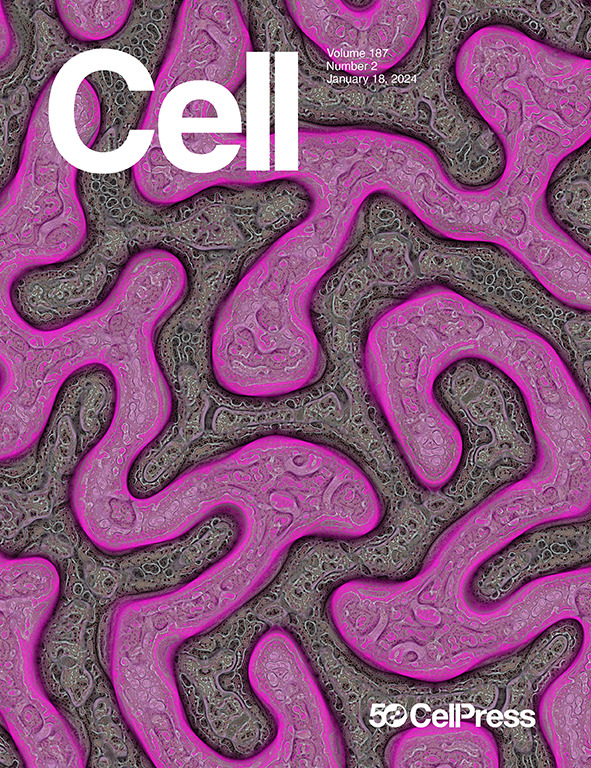侧缰核神经元-星形胶质细胞偶联介导抑郁样行为
IF 45.5
1区 生物学
Q1 BIOCHEMISTRY & MOLECULAR BIOLOGY
引用次数: 0
摘要
侧链(LHb)神经元和星形胶质细胞与抑郁症病因密切相关,但尚不清楚两者在抑郁症发病过程中如何动态相互作用。在这里,使用多脑区钙光度法记录自由移动的小鼠,我们发现应激诱导星形细胞钙最快速上升和双峰神经元反应在LHb。LHb星形细胞钙需要α 1a -肾上腺素能受体,并依赖于LHb和蓝斑座(LC)之间的循环神经网络。LHb星形胶质细胞通过胶质递质谷氨酸和ATP/腺苷介导第二波LHb神经元激活和去甲肾上腺素(NE)释放。激活或抑制LHb星形细胞钙信号分别促进或阻止应激诱导的抑郁样行为。这些结果在LHb-LC轴上确定了应力诱导的正反馈回路,星形胶质细胞是一个关键的信号中继。这种突出的神经元-神经胶质相互作用的识别可能有助于压力管理和抑郁预防。本文章由计算机程序翻译,如有差异,请以英文原文为准。

Neuron-astrocyte coupling in lateral habenula mediates depressive-like behaviors
The lateral habenula (LHb) neurons and astrocytes have been strongly implicated in depression etiology, but it was not clear how the two dynamically interact during depression onset. Here, using multi-brain-region calcium photometry recording in freely moving mice, we discover that stress induces a most rapid astrocytic calcium rise and a bimodal neuronal response in the LHb. LHb astrocytic calcium requires the α1A-adrenergic receptor and depends on a recurrent neural network between the LHb and locus coeruleus (LC). Through the gliotransmitter glutamate and ATP/adenosine, LHb astrocytes mediate the second-wave LHb neuronal activation and norepinephrine (NE) release. Activation or inhibition of LHb astrocytic calcium signaling facilitates or prevents stress-induced depressive-like behaviors, respectively. These results identify a stress-induced positive feedback loop in the LHb-LC axis, with astrocytes being a critical signaling relay. The identification of this prominent neuron-glia interaction may shed light on stress management and depression prevention.
求助全文
通过发布文献求助,成功后即可免费获取论文全文。
去求助
来源期刊

Cell
生物-生化与分子生物学
CiteScore
110.00
自引率
0.80%
发文量
396
审稿时长
2 months
期刊介绍:
Cells is an international, peer-reviewed, open access journal that focuses on cell biology, molecular biology, and biophysics. It is affiliated with several societies, including the Spanish Society for Biochemistry and Molecular Biology (SEBBM), Nordic Autophagy Society (NAS), Spanish Society of Hematology and Hemotherapy (SEHH), and Society for Regenerative Medicine (Russian Federation) (RPO).
The journal publishes research findings of significant importance in various areas of experimental biology, such as cell biology, molecular biology, neuroscience, immunology, virology, microbiology, cancer, human genetics, systems biology, signaling, and disease mechanisms and therapeutics. The primary criterion for considering papers is whether the results contribute to significant conceptual advances or raise thought-provoking questions and hypotheses related to interesting and important biological inquiries.
In addition to primary research articles presented in four formats, Cells also features review and opinion articles in its "leading edge" section, discussing recent research advancements and topics of interest to its wide readership.
 求助内容:
求助内容: 应助结果提醒方式:
应助结果提醒方式:


